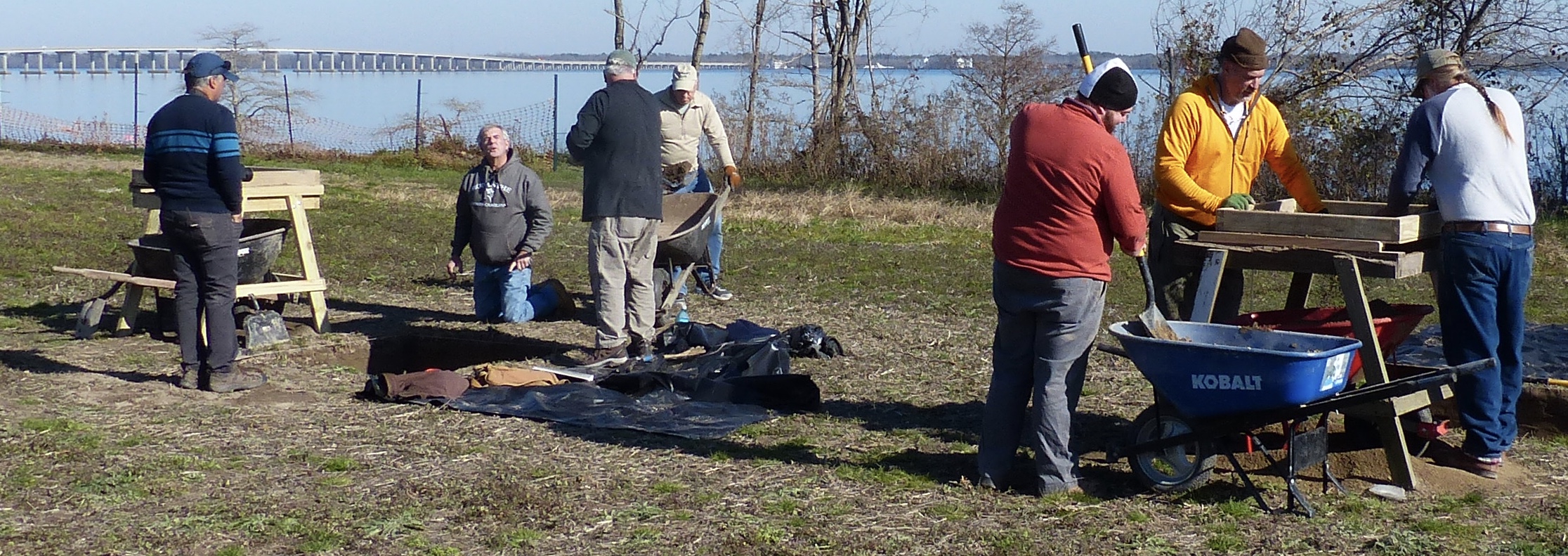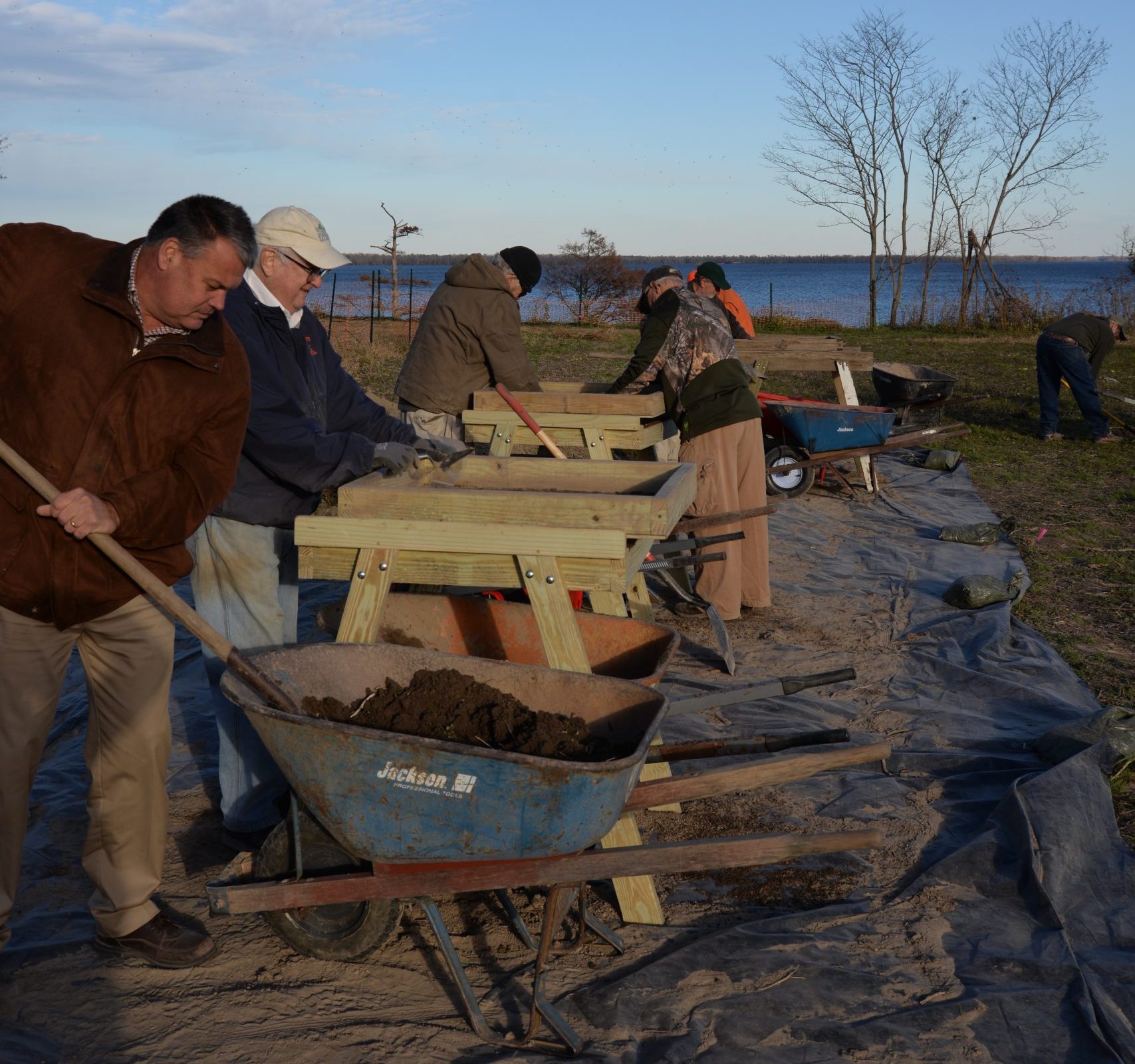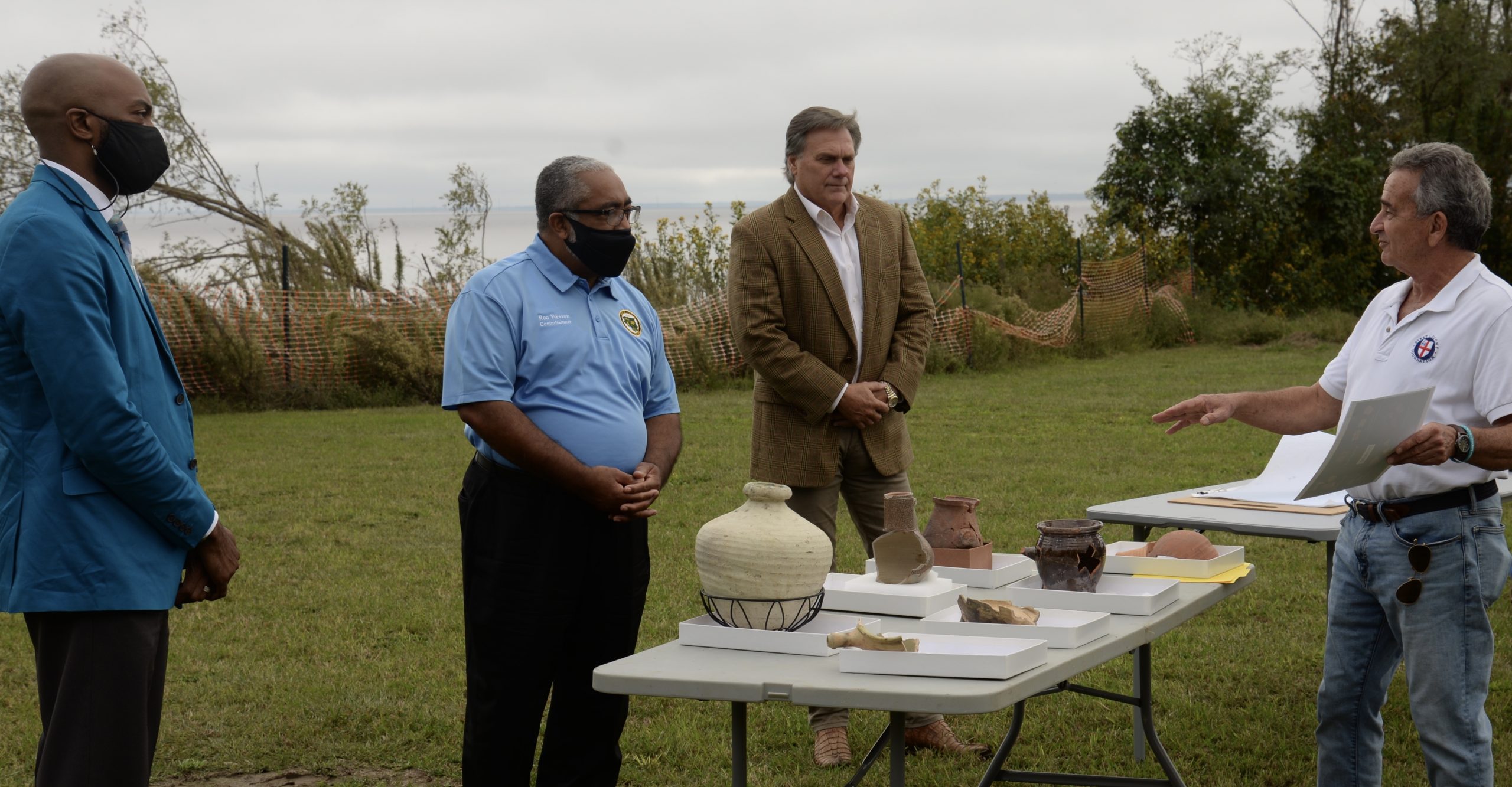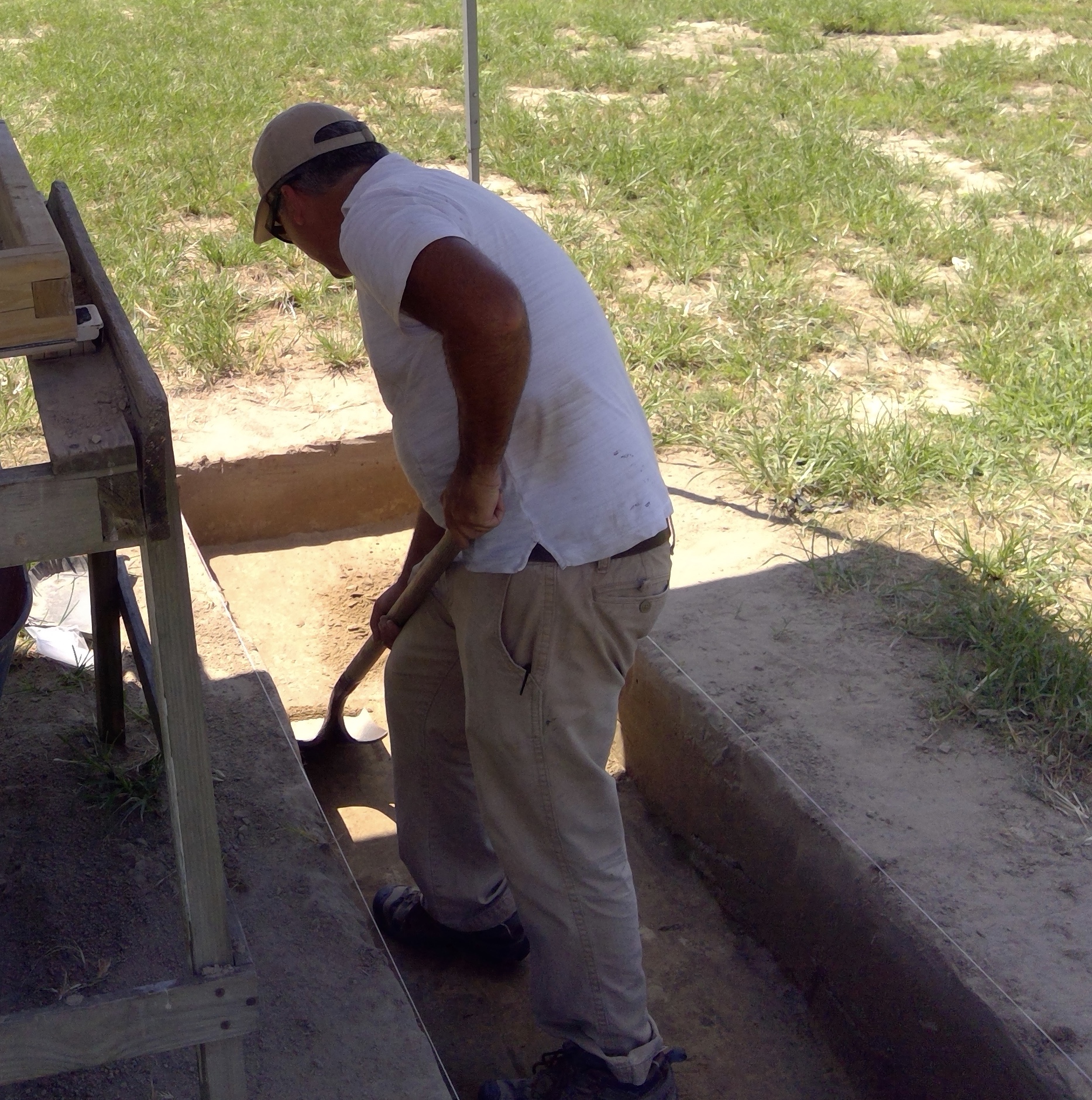
Additional clues pointing to the fate of Sir Walter Raleigh’s “Lost Colony” have been unearthed near the Chowan River, with excavated remnants of everyday life showing “compelling evidence” that several settlers from the 1587 Roanoke Island colony had lived at the site for a few years, the First Colony Foundation announced Thursday.
The discovery from the 2019-2020 archaeological survey in agricultural lands north of Salmon Creek, known as Site Y, bolsters a similar conclusion based on artifacts dug up during the foundation’s earlier excavation of nearby Site X.
Supporter Spotlight
Findings discovered with ground-penetrating radar and screened soil excavated from 72 test squares consisted of ceramic sherds that archaeologists determined were Elizabethan artifacts used during the Roanoke Colonist Period, according to the foundation.

Site Y is located on the northeast corner of property that Bertie County acquired for a proposed recreational project called Tall Glass of Water.
English explorers were sent in 1584 by Raleigh to the coasts of North Carolina and Virginia to find a suitable place to establish a settlement. They explored the Chowan River area at the time, adding to the likelihood that the later, 1587 colonists were aware of the area.
The fate of the Roanoke colony’s more than 100 men, women and children, last seen in August 1587 when Gov. John White left for England to get supplies, remains one of the most abiding mysteries of Early Colonial American history. Although some evidence of English activity and interaction with natives has been found at Fort Raleigh National Historic Site and Buxton sites, it is so far inconclusive.
Numerous hypothesis to explain the disappearance of the Lost Colony have been bandied about for decades: the colony died of starvation; they were slaughtered by Native Americans tribes; they relocated to Hatteras Island and/or the mainland en masse and assimilated with natives; or they split off in smaller groups.
Supporter Spotlight
“Several prominent historians of the Roanoke ventures believe that there was not a likely single large relocation site,” the release said, “but that many of the Roanoke colonists dispersed into numerous small settlement groups, just as a food shortage in 1586 had forced Raleigh’s first Roanoke colony to disperse.”
What is significant about what has been found at both Salmon Creek sites, principal investigator and Foundation Research Vice President Nicholas Luccketti said in an interview, is that — for the first time — there is evidence showing that some colonists actually had lived there.

Based on examination by Beverly Straube, Jamestown Settlement senior curator and First Colony Foundation curator, and Jamestown Rediscovery curator Merry A. Outlaw, the unearthed pieces, remains of what was used by late 16th-century English to serve, consume and store food, were identified as Surrey-Hampshire border ware, North Devon baluster jar, London redware, Essex fine redware, Spanish olive jars, stoneware from Germany, and Martincamp stoneware from France.
Although some artifacts, such as the border ware, was the same type found at Site X, the majority was different, Luccketti said.
“So it’s a more expansive ceramic collection – more than we found at Site X,” principal Luccketti said. The recovered material were sherds of the original objects that had been battered by years of plowing the land.
Based on the findings, he added, a small number of colonists, perhaps an extended family and a few indentured servants, resided there for a few years.
Site X, which is about two miles from “Site Y, had also been determined to have hosted a small group of Roanoke colonists for a short period, providing strong hints that the colony had split up when it left Roanoke Island.
“We all agree that is not the major relocation site of the Lost Colony,” Luccketti said about Site Y. “We know, because of the amount of material found at this site, it’s not a major relocation site, but again, a satellite site.”
Researchers with the foundation have established that the excavated material associated with the colonists was not a result of European trade with Native Americans, or of natives living with colonists at the sites. The material also did not date to the 1655 permanent settlement by Nathaniel Bates.

Both sites X and Y are near the Algonkian Indian town Mettaquem that foundation researchers tested archaeologically in 2018, according to the foundation.
Grants from Bertie County, the town of Windsor, the Walter A. Bloedorn Foundation of Washington, D.C., and foundation supporters funded the field work and analysis. The foundation credits the preservation efforts of the Coastal Land Trust, which had purchased the nearly 1,000-acre Salmon Creek site and donated it to the state, for securing Site X and Mettaquem within the Salmon Creek State Natural Recreation Area.
As Luccketti explained, the foundation was following the bread crumbs laid out years ago by several historians, including the late Tom Parramore at Meredith College. The initial clue was provided by John White, who had directed colonists to travel 50 miles into the mainland to escape trouble. That’s about the distance that Salmon Creek is from Roanoke Island.
“We’re not the first ones to come up with the idea that they went to Bertie County,” he said.
For now, work at both sites, which have been backfilled, has concluded, Luccketti said, but the foundation’s mission is to continue fundraising for additional research to try to find other sites in the vicinity that are related to the Lost Colony. Reports on the Site X and Site Y work will be completed in coming months and posted on the foundation’s website, he said.
It has yet to be determined where the foundation, which was established in 2003, will next explore. It’s possible that there are more satellite sites, and even a big “core” site where a larger number of colonists reestablished themselves.
“Well that’s something we are looking at now because we’ve looked at the first areas that we wanted to target,” the archaeologist said. “And now that we’ve got this Site Y, we want to step back and rethink where we might want to go again in the future.”







